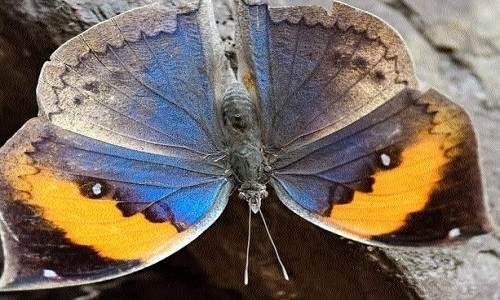Extraordinary butterfly gives unique identity to Achanakmar Tiger Reserve
| Date :29-Apr-2024 |

Our Correspondent
BILASPUR,
THE presence of the ‘Orange Oakleaf (Kallima Inachus)’ butterfly has bestowed a distinctive identity upon the Achanakmar Tiger Reserve (ATR) in the district. It is worth mentioning here that there are approximately 1500 species of butterflies across the country. While some Indian states have designated their state butterflies, it was only a few years ago that a national butterfly was chosen for the first time. With over 60 thousand votes, the ‘Orange Oakleaf (Kallima Inachus)’ butterfly clinched a landslide victory. The existence of this extraordinary butterfly in the Achanakmar Tiger Reserve (ATR) proves that the environment of the ATR forest is conducive to its presence. Wildlife Photographer Satyaprakash Pandey while taking pictures with his 40-mm micro lens camera said that it was a beautiful experience to see this camouflaged butterfly present in large numbers in ATR and the ethereal of nature was no less than a miracle. “This butterfly is a real expert in camouflage.
When its wings are closed it appears similar to a dead leaf in both colour and shape. It uses this disguise as a means of hiding from predators and is extremely difficult to spot when it is on the ground in a tree or among leaf litters. The colour differs and the mysterious pattern on the underside of the wings also varies making it even more difficult for predators to identify. Its veins are often dark in coloUr and resemble the central stem and veins of the leaf”, he told. But there is also a drawback to this as when this butterfly enjoys sunshine and opens its wings, it is unable to hide itself due to brighter colours on its upper wings. This results in the species being regularly attacked, especially by birds. Pandey further said that Kallima Inachus is a strong flyer and a medium-large butterfly with a wingspan of 60–90 mm.
It is sexually dimorphic with the female being larger than the male, having different colouration and a longer point at the anterior apex. The species is polyphenic and there is seasonal variation in form, with the wet season form being slightly smaller than the dry season form. “Both sexes only occasionally forage for flower nectar and instead prefer tree sap and rotting fruits. They usually sit upside down when feeding on nectar and this adds to the illusion that they are a dead leaf. Its common name depends from place to place but it is also called ‘Orange Oakleaf’ or Dead Leaf Butterfly”, he added.